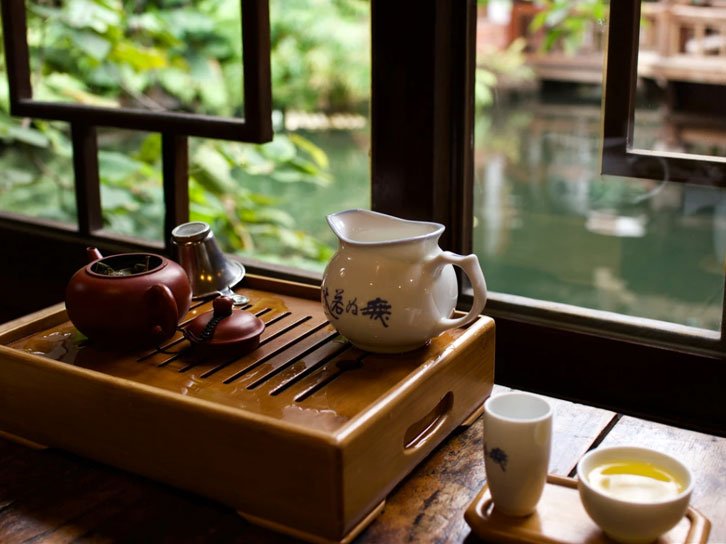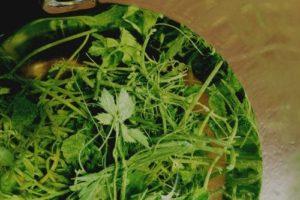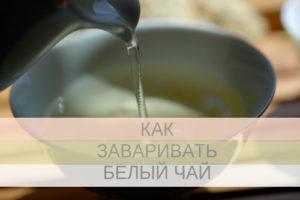1. 茶性 – cha shin – nature of chayu
In Chinese culture, all products have a characteristic called “nature”. It can be cold, moderate or warm. What nature – such an effect; cold teas cool down, hot – add heat. This knowledge helps to koriguvati condition. Thus, for example, green and white teas are referred to cold teas (han xin), and black and black are warm teas.
There is another interpretation of this term, in which “the nature of tea” means its strength, intensity or character of flavor. This strength is determined by the type of aroma and the intensity of tart and hot flavor. This is how “strong” and “weak” teas are distinguished.
2. 茶质 – cha zhi – quality of tea
The term describes the full flavor, which includes many characteristics: maltiness, smoothness, aftertaste, depth, brewing stability. The quality of tea is described by the following words: thick – rare, fine – light, thin – brisk.
3. 茶气 – cha tsi – china “tsi”
Tsi is interpreted as energy, life force and breath. It is often associated with the quality of tea. It can be said that one tea is “potent” and another is “weak”. What does it mean? For example, the following explanation is given by the Chinese Wikipedia: “Tea Tsi from the viewpoint of medical physiology is a complex combination of pharmacological effects caused by tea in the body, and spiritual activity of people”. The effect of tea on people is not the same, everyone is in a special state, which changes depending on different factors.
4. 生津 – sheng jin – strengthening of secretion
This term is from Traditional Chinese Medicine (TCM). It refers to the activation of the plum secretion after drinking tea. In practice, this quality gives smoothness and ease of drinking tea by rinsing the oral cavity.
5. 收敛性 – show liang shin – w’yazhuchi power properties
The name speaks for itself, describing the sensation of tightness on the surface of the tongue and in the mouth after drinking tea. It is similar to tartness, but it is more pronounced.
6. 层次感 – tsin tsi gan – the feeling of “bagatosharosti”
“Tzin” – surface, level. “Ci” means “order.” “Gan” – “sensation”. As for tea, the concept is understood as the presence of the bagatosphericity of flavor and taste, the baggage of taste.
7. 饱满 – bao man
Indicates a rich and full flavor that spreads in the mouth and throat, which gives a feeling of satisfaction.
8. 水味– shui wei – savor vodi
The taste of the tea is weak, you may feel watery or watery. This is normal at the end of tea drinking, but if you feel this at the beginning, there must be a problem with the water or tea.
9. 茶水分离 – chashui fen – vidsharuvannya vodi v chayu
In essence, it is similar to the previous term, but still different from it. This is a savoring effect of a separate perception of the taste of water from the taste of tea, because there was no proper mixing, dispersion of substances in water. The sensation is described in the following way: after drinking tea, there is not the savor of tea on the lips, but the savor of the sprinkle.
10. 爽朗 – shuang lan – clean, bright, pleasant
The quality of savoring, which is characteristic of vitriman tea – cleanliness and smoothness after ladling, a special pleasant sensation that replenishes the mouth cavity.
11. 烟熏味 – yan xun wei – dim odor
With the occasional exception when processing includes smoking, a dim odor for tea is not the norm.
12. 果酸味 – Go Xuan Wei – fruity sourness for savoring.
A pleasant refreshing flavor associated with the delicate acidity of some fresh fruits. This is the term, for example, used by the producers of Te Guanin – this prefix indicates the nature of the processing that leads to the formation of this flavor.
13. 青味 – qing wei – savor/smell of greenery
Qing wei – the smell of grass, quitti, leaves is similar to the smell of hay. It is characteristic of green tea, when shaqin (“killing of greens”) was not very intense. The odor of green tea can be reminiscent of pea pods, grass clippings and even fish.
14. 销喉 – suo hou – dry throat (literally translated as “to mend the throat”)
The feeling after drinking some teas is dryness, an unpleasant irritating uneasiness in the throat, or it is difficult to make a ladle, or something obstructs or jams. This defect can be caused by several manufacturing faults: – low quality syrup, in which there is no balance between substances, e.g. too high poliphenols or high pesticides; improper processing: excessive water in the tea leaf during drying, over-oiling of the leaf, excessive fermentation.
15. 气 – xiang qi – flavor
This simple and understandable term includes the type of flavor, its characteristics, differences at different stages of brewing and sensation in the mouth: on the tongue, in the throat, cheeks and palate.
16. 气内敛 – xiang qinei liang – streamline flavor
A closed aroma, it does not spread in the interior but can be sensed in the infusion. To smell it, you need to pay special attention to the tea drinking process.
17. 入口即化 – zhu kou ji hua – “tanuti u mouthi”.
This term means that tea is so easy to drink that it does not need to be specially ladled. This quality is typical of the vitriolic teas – you can say about them “it melts in your mouth, you made a ladle, but you probably didn’t drink it”.
18. 舌底鸣泉 – she di ming quan – callousing of the root of the uvula
Pomitnea increase in the secretion of plum in the mouth. In Chinese sources, the word “ming” is mentioned, which means the continuity of this process.
19. 药香 – yao xiang – medicinal odor
Primananny of old teas, mainly Pueram, adds to the palette of flavor. The characterization is ambiguous, not everyone likes this association. It should be added that the medicinal aroma is, roughly speaking, the aroma of a Chinese traditional pharmacy – a special sum of root odors and other local medicines and infusions.
20. 陈韵 – chen yun – “melody of vitrimanosti”
Charitability of tea flavor, born of time. It is formed under favorable conditions: good quality fermentation, processing and proper vitrimation.
21. 喉韵 – hou yun – “melody in my throat.”
The sensation that occurs in the throat after drinking: a combination of maltiness, juiciness, dryness.
22. 回甘 – hui gan – maltiness that returns
The process of transformation of savoring and after-smack is the nasoloda that comes with the savoring of tea.
23. 苦涩 – kuse – girkota i terpkisti
Girkota – a savor, tartness – is a sensation caused by the effect of certain tea substances on the tissues of the oral cavity.
24. 酸味 – suan wei – sour savor
If we are not talking about sourness, which is normal for some teas, but about sour taste, for example, puerh, it is a negative characteristic. Sour flavor is caused by a malfunction in the processing process and is often associated with too much water, tea that has not been dried to the end, that was too wet during steeping, and so on.
25. 水性 – shui xing – nature of water This is the characteristic of tea infusion and its manifestations in the mouth. It includes a range of sensations: sliminess, smoothness, melting, fullness, shortness, thick or rare flavor, clear or pink. The concept is mainly used in the evaluation of puerh.
Our most popular tea
-
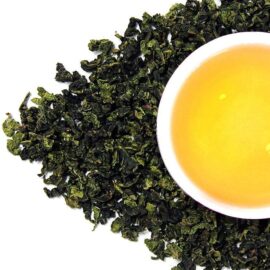 Tie Guan Yin Fujian An Xi Oolong tea (No180)297₴ /50g
Tie Guan Yin Fujian An Xi Oolong tea (No180)297₴ /50g -
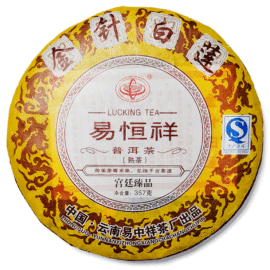 Golden Needle White Lotus 2013, Shu Puer tea (No360)972₴ /100g
Golden Needle White Lotus 2013, Shu Puer tea (No360)972₴ /100g -
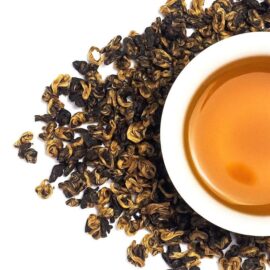 Hong Bi Luo loose red (black) tea (No.150)259₴ /50g
Hong Bi Luo loose red (black) tea (No.150)259₴ /50g -
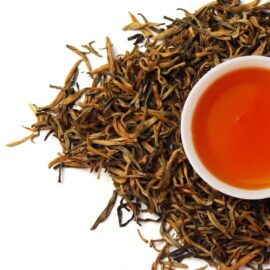 Nuyi Er Hong loose-leaf red (black) tea (No. 180)297₴ /50g
Nuyi Er Hong loose-leaf red (black) tea (No. 180)297₴ /50g -
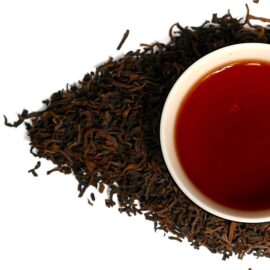 Menghai tea Shu Puer (No. 120)234₴ /50g
Menghai tea Shu Puer (No. 120)234₴ /50g -
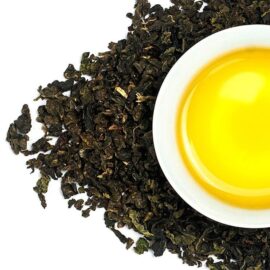 Tie Guan Yin “Iron Bodhisattva” Light Oolong (No360)486₴ /50g
Tie Guan Yin “Iron Bodhisattva” Light Oolong (No360)486₴ /50g
